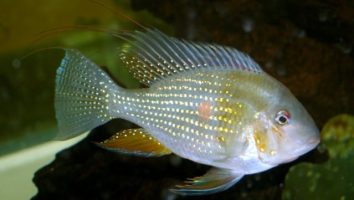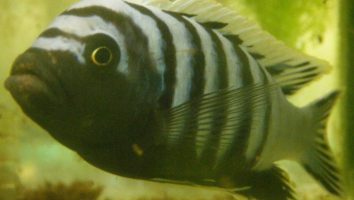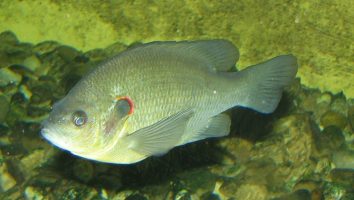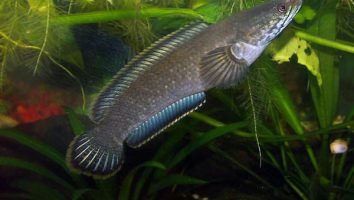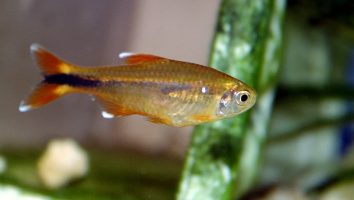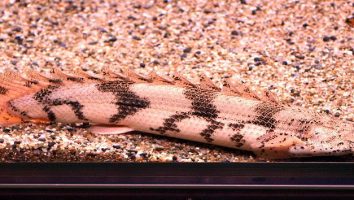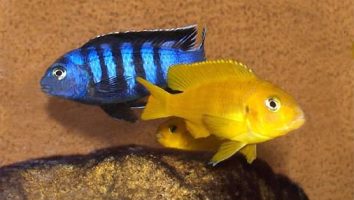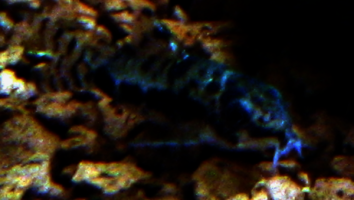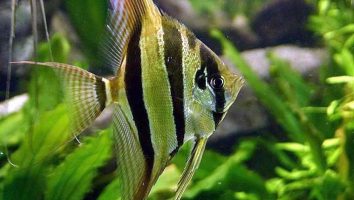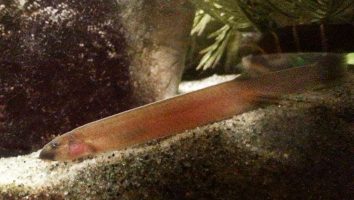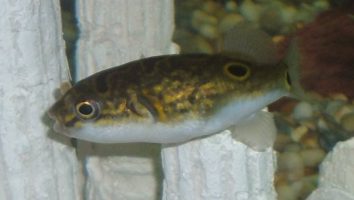The barred pencilfish is a beautiful freshwater fish that is perfect for the beginner aquarist. They are very peaceful and easy to care for, and make a great addition to any community tank.
This guide will teach you everything you need to know about barred pencilfish care. You’ll learn about their diet, size, lifespan, and more!
Table of contents
Species overview
Barred pencilfish (scientific name: Nannostomus Margaritatus) are a freshwater fish that’s native to Guyana, Suriname, and French Guiana.
They live in slow-moving waters that are heavily vegetated. This is something to keep in mind when setting up their aquarium because they’ll need a lot of plants to feel comfortable.
The diet of a barred pencilfish is mostly composed of small insects and other invertebrates. In the wild, they’ll also eat algae and other plant matter.
These fish are very peaceful and can be kept with a wide variety of tank mates. They’re a popular choice for nano aquariums because they don’t need a lot of space to feel comfortable.
Appearance
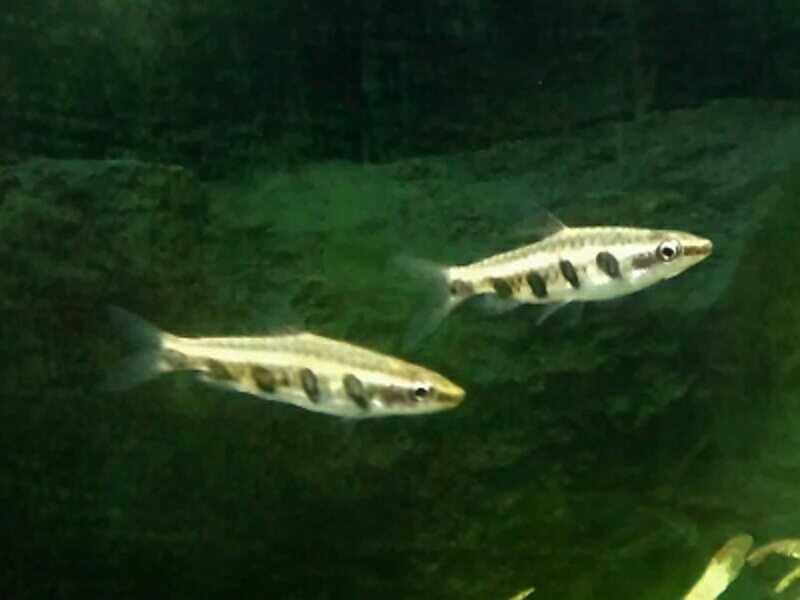
The first thing you’ll notice about this fish is the striking black and white stripes that adorn their bodies. These stripes run horizontally and are a major part of their unique appearance.
The body of the Barred Pencilfish is long, thin, and slightly curved. This gives them a very sleek appearance that is accented by their small size.
Their fins are all small and relatively unremarkable. The dorsal fin is slightly taller than the anal fin and both begin a little more than halfway back on the body.
The caudal fin is forked and symmetrical. All of the fins are clear with a slight yellow tint.
The head of the Barred Pencilfish is where things get really interesting. They have a long snout that is quite thin. This snout is lined with tiny little teeth that they use to eat.
Their eyes are large and prominent on their head. They have a small mouth that is located at the very end of their snout.
Lifespan
The lifespan of a barred pencilfish in captivity is around 5 years. However, this number can go up or down depending on the quality of care they receive.
As with any other fish, things like water quality, diet, and stress can impact their lifespan. If you want your fish to live as long as possible, it’s important to do your research and provide them with the best possible care.
Size
The average size of a barred pencilfish is around 2.5 inches.
Tank
Tank Size
The recommended tank size for a single barred pencilfish is 10 gallons. If you’re looking for a freshwater fish that can fit in an average-sized tank, this is a good option.
If you want to keep a school of pencilfish, we recommend a 20-gallon tank as a minimum. This will give them enough space to swim around and school together without feeling cramped.
Water Parameters
The barred pencilfish is a freshwater tropical fish that’s native to South America. They’re found in slow-moving rivers and streams with plenty of dense vegetation.
That means the water is typically warm, slightly acidic, and soft to medium hard.
Here are the basic water parameters you should maintain for a healthy barred pencilfish environment.
- Water temperature: 70 to 80 degrees Fahrenheit
- pH levels: 6.0 to 7.6
- Water hardness: 2 to 12 dGH
- Alkalinity Levels: 4-8 dKH
What To Put In Their Tank
When it comes to setting up the interior of their tank, you have a few different options.
The first is to go with a heavily planted tank. These fish love plants and will spend a lot of their time hiding in them.
The second option is to go with a more open tank. This will give them plenty of room to swim around and explore.
We prefer the latter option since it gives them a little more room to move around. That being said, you can go with either one and they will be just fine.
Plants are still a good idea though if you want to include them. Just be sure to use species that can handle being nibbled on (Hornwort, Water Wisteria, Java Moss, etc.).
The substrate you choose is also important. Barred pencilfish love to dig and root around in the substrate so you’ll want something that won’t hurt them if they do this. A soft, sandy substrate is ideal.
You can also add some driftwood or rocks to their tank if you want. Just be sure that they are big enough that your fish can’t move them around.
Common Diseases
The most common disease that affects pencilfish is definitely ich. This is a parasite that can quickly spread through a tank and decimate a population if left unchecked.
The most obvious sign of ich is the presence of small white spots on the body, fins, and gills of your fish. If you see this, it’s important to take action immediately.
The good news is that ich is relatively easy to treat. There are a number of products on the market that will quickly eradicate it.
The important thing is to catch it early. If you wait too long, the ich will have a chance to spread and become much harder to treat.
Another disease that can affect pencilfish is fungal infections. These are usually the result of poor water quality and can be quite difficult to treat.
The most common symptom of a fungal infection is a white cotton-like growth on the skin of your fish. If you see this, you’ll need to take quick action to treat the infection before it spreads.
The best way to prevent these diseases is to maintain a clean and healthy environment for your fish. Keep the water quality high and don’t over crowd the tank.
By following these simple steps, you’ll significantly reduce the chance of your fish getting sick.
Behavior & Temperament
The barred pencilfish is a shy and reclusive fish that spends most of its time hiding. It’s not uncommon for them to go for long periods of time without being seen. When they do come out, it’s usually only for a short while before they dart back to their hiding spot.
These fish are most active at night, which is when they’ll come out to feed. During the day, they’ll stick to the shadows and avoid open areas as much as possible.
The barred pencilfish is a peaceful fish that gets along with other creatures. However, it can be territorial with other fish of the same species. If you’re keeping more than one in a tank, make sure there is plenty of hiding places so they can each have their own space.
Tank Mates
The barred pencilfish is a small and peaceful species. As a result, there are tons of different fish that work well as tank mates.
The main concern with these fish is that they’re so small. Some species might see them as food. This is especially true if the tank mates are larger and more aggressive.
With that in mind, here are some species that work well:
- Neon Tetras
- Cardinal Tetras
- Ember Tetras
- Black Neon Tetras
- Ghost Shrimp
- Guppies
- Mollies
- Platies
Breeding
The barred pencilfish is a beautiful freshwater fish that’s perfect for the home aquarium. They’re peaceful, relatively easy to care for, and make a great addition to any community tank.
Breeding this species is also relatively easy, as long as you have the right setup.
First, you’ll need a breeding tank. It should hold at least 10 gallons of water and be equipped with a quality filter. The tank should also have plenty of hiding places and live plants.
Pencilfish are egg-scatterers, so you don’t need to worry about providing them with a specific spawning substrate.
When ready, add two to three females for every male. Males are usually smaller and have more colorful patterns.
Feed the fish plenty of live foods and keep the water well-oxygenated. You may also need to perform more water changes than usual.
When the female is ready to lay eggs, she’ll do so on the plants. The male will then fertilize them.
After a few days, the eggs will hatch. At this point, you can start feeding the fry live foods like baby brine shrimp.
Conclusion
The Barred Pencilfish is a great freshwater fish for beginners and experienced aquarists alike. They’re easy to care for and their unique appearance is sure to turn some heads.
If you’re looking for a new fish to add to your tank, we highly recommend giving the Barred Pencilfish a try!

